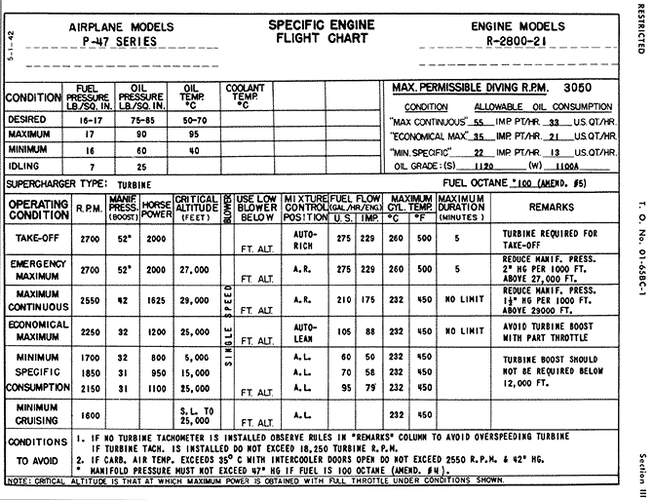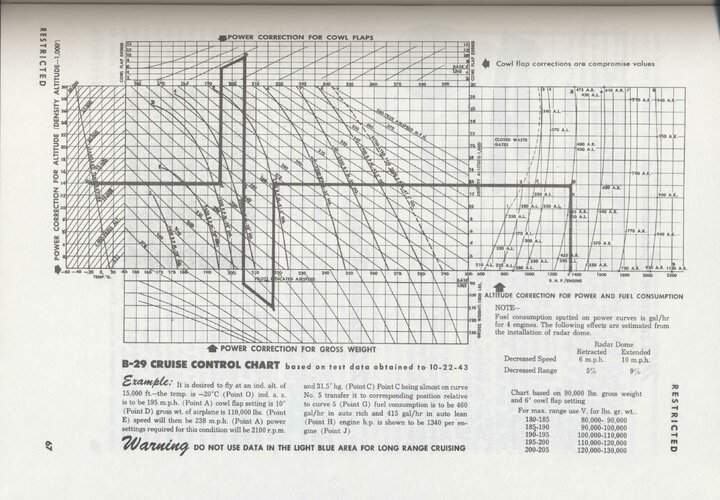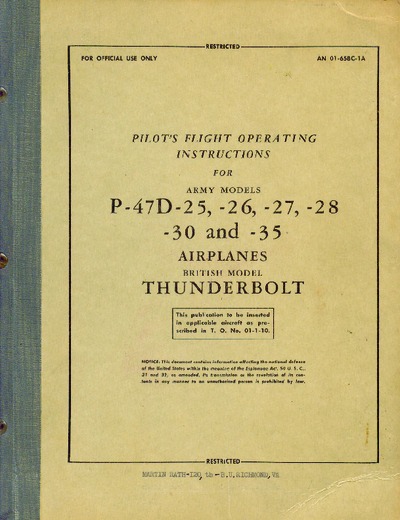Hi Pasoleati,
The other R-2800 data is from the manual for the P-47D-25/26/27/28/30/35 (viewable on Avialogs).
Thanks for the reference! Does that manual have good resolution scans? I'm asking because I just bought two manuals from Periscope Film LLC (Hughes HK-1 Spruce Goose and an F-86 variant), and while they're nice and tidy, resolution is very coarse to the point that some of the more interesting tables are basically illegible without guessing half of the numbers, and the dimensions in the diagrams are pixel garbage. I didn't send them back, but once bitten, twice shy ... totally defeats the purpose of buying manuals if they're not legible.
My original impetus for the thread is based on the fact that when going to "big" engines with normal piston engine design practice, the powwr/weight ratio is getting poorer while complexity goes up.
Good point. The R-3350 probably is better than most high-power WW2 engines as it achieves its performance with an "ordinary" 18-cylinder layout, but getting a large engine to work still required more time than expected, I guess.
The pairing of smaller generally doesn't seem to have been that much easier than developing new big engines, especially if one takes airframe integration into account.
On the other hand, using 6 instead of 4 engines when the required power couldn't be achieved on fewer engines seems to have been quite straightforward ... the Me 323 and the Bv 222 seem to have been quite trouble-free in that regard. We also have the rare birds Bv 238 and Ju 390, and also examples for the use of 4 engines instead of the original 2 on the He 177B/He 277 (counting the DB 610 as a single engine) as well as on the Lancaster (compared to the Vulture-engined Manchester).
In case of the B-29, e.g. those 8 coupled Allisons would not increase weight greatly while power would be much increased while the basic engines would be well-proven designs. One may argue about the gearbox and its weight/reliability, but then, basically all large helicopters have 2 or 3 engines coupled in one common gearbox.
I'm not so sure about piston-engined helicopters, which due to the power pulses inherent in internal combustion engines are probably more difficult to get right than turbine-engined helicopters. However, the Piasecki H-21, though single-engined, probably shows that's not an unsurmountable obstacle. However, I suspect that under the time constraints of WW2, dealing with rotational oscillations is something one might have wanted to avoid. Even simple extension shafts connecting a single motor with a single propeller were rare and few between.
With regard to your two options, I suspect that the six V-1710-111 variant might not have had quite enough power. The cruise control chart I posted show that the B-29 needed around 5400 HP for cruising at medium weight, and the maximum cruise power of the V-1710-111 was 795 HP, so you'd und up with 4770 HP for the six of them, which is about one engine short of the required power. While the peak power of the V-1710-111 is higher, the 795 HP seems to be all the engine can deliver in auto lean mode where it consumes 216 g/HP/h. Going to maximum continuous power of 1100 HP per engine, consumption increases to 280 g/HP/h, which again is more than the R-3350's 252 g/HP/h at 1620 HP in auto rich mode. There's probably a decrease in drag if the V-1710-engined B-29 variant uses well-streamlined radiators, but on the other hand, it needs six engine nacelles instead of four, so I'd speculate it probably comes out more or less even.
With eight V-1710-111's, the B-29 should be fine with regard to available and required power, though one would probably have to check the weight situation. I am not sure the V-1710-111 would fit into the confines of the relatively thin B-29 wing, so one might end up with nacelles anyway, and accepting that, maybe the use of the V-3420 configuration would be preferrable over some entirely untried new solution.
Regards,
Henning (HoHun)



